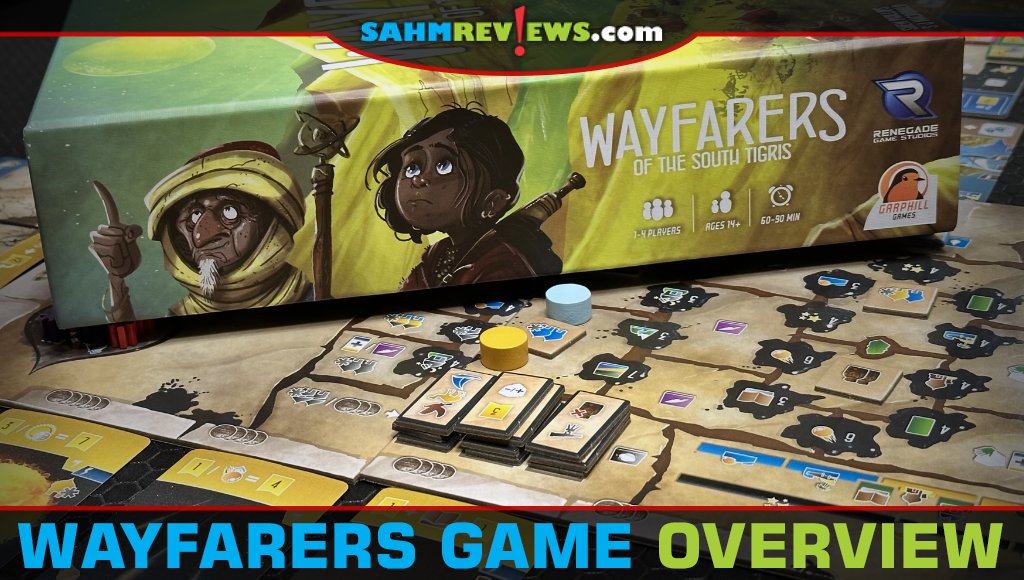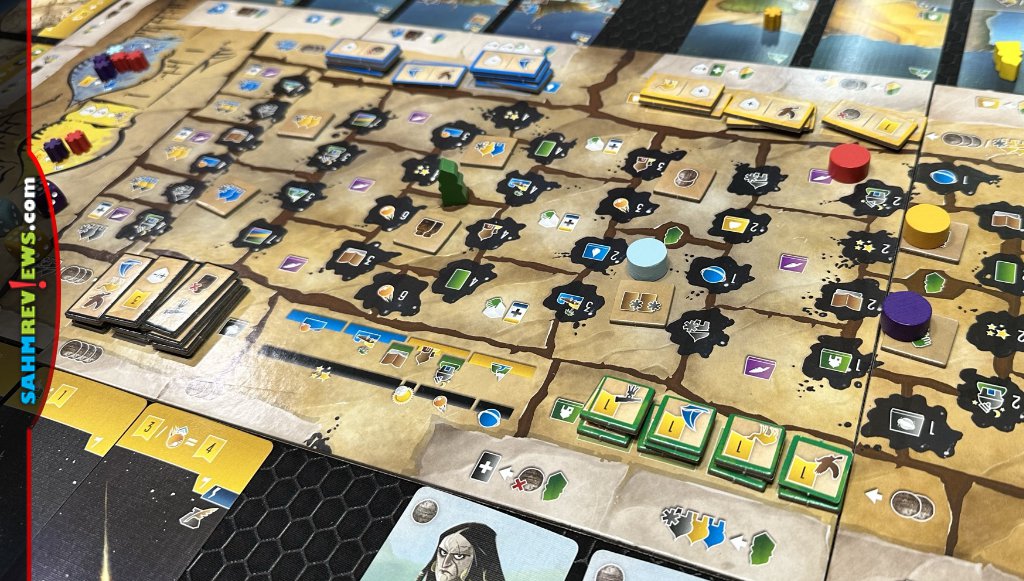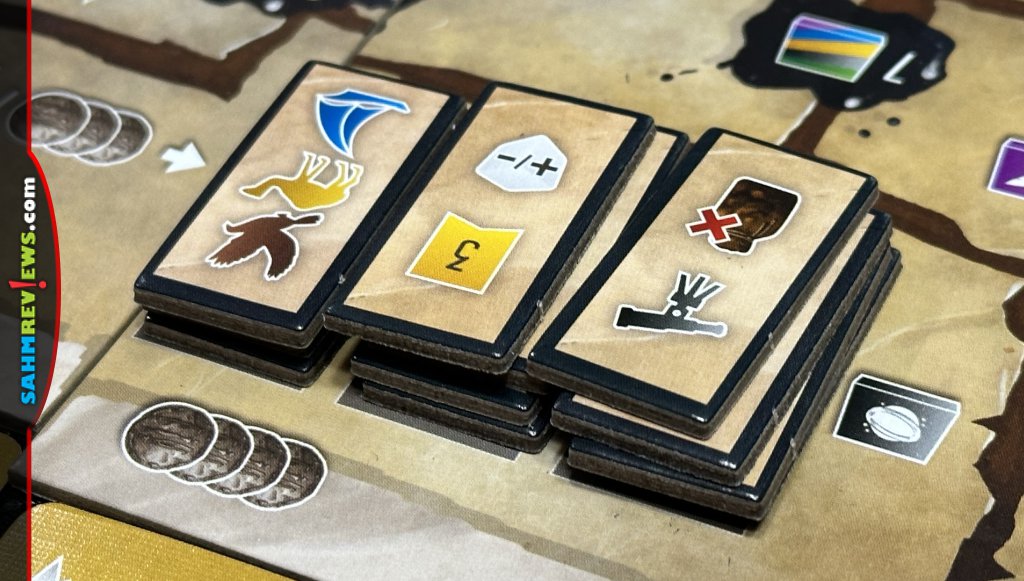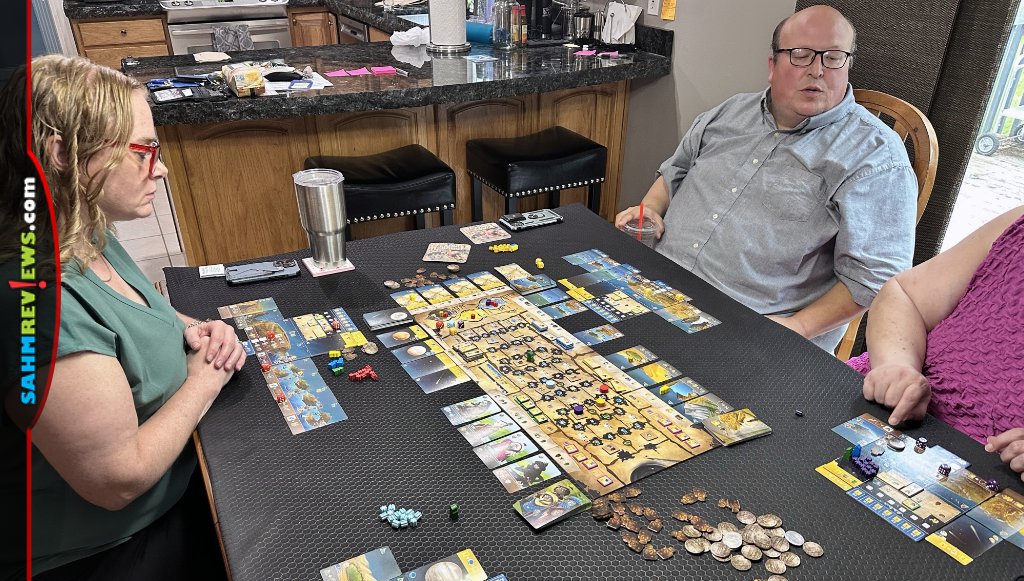Wayfarers of the South Tigris Game Overview

With the girls now off at college, we rely on our gaming friends playing new releases and creating content surrounding them. Doug and Sandy are the two we game with every Sunday so they’re the ones most likely to be Guinea pigs when we say we have something new to try. They’re always willing and Doug often offers to learn all the rules. But as can be expected, there are some games that resonate more with them than others. Wayfarers of the South Tigris from Renegade Game Studios is one of those. When we told Sandy that was the game we would be playing last weekend, she got positively giddy. While she hadn’t tried this particular game, The West Kingdom trilogy (also designed by S J Macdonald and Shem Phillips) are among her favorite titles.

There are a lot of similarities, but each of these games is totally unique with loads of replay value. Wayfarers of the South Tigris took a little bit of time to set up and explain, but once we started rolling, the turns went pretty quick. Players are acting as explorers, cartographers and astronomers who have set out to map the land, waterways and sky. The setup involves placing various cards and tiles across the board as well as providing each player with their own board, markers, dice and resources. It looks like a lot of chaos, but stepping through the various card and token types during setup helps players grasp their various functions.

The main board is broken down into a few different sections. The center is the Journal Track and represents how players record their progress. This displays various requirements that must be met in order to continue on the track. Your journaling progress is completely controlled by what transpires on your individual adventure. That probably doesn’t make a lot of sense, but to sum it up: you can’t rush ahead. You have to meet certain criteria before you can move along. Since this section of the board is the timekeeper for the game, that simple concept is really what is most important.

In addition to the Journal Track, the board is surrounded by various types of cards representing Townsfolk (who assist in the journey), Mapping (Land, Water and Space) as well as Inspiration. They offer the dual purpose of either 1) being purchased and added to your individual map or 2) utilized as an action space by adding a meeple from your supply to activate the corresponding space on the board.

Finally, there are various tiles on the main board. These are used to upgrade your individual board. While I’m several paragraphs into this overview and haven’t even touched on the individual player boards, THIS is actually the meat of the entire game. Remember how I said you start with dice? Well, those dice are what determine your potential actions.

When they’re rolled, they are matched up to the grid on the top of your board. Only actions in that designated column may be accessed using that particular die. As you acquire tiles, you can update the various columns to provide more options on how the dice may be utilized.

In addition, many of the land and sea cards have places for activating dice. Other cards may provide bonus actions, resources, rule breakers or dice retrieval. There are a few places on your individual board where any die may be placed to acquire resources, cards or tiles.

When you’ve expended all your dice, you rest. But unlike most games where you’re just collecting your dice or meeples back, that’s not the case here. Your rest action automatically allows you to move on the journal track (if you meet the requirements, of course). There’s a lot happening in Wayfarers of the South Tigris, but this overview just briefly touches on all of it. With things like workers that are temporary, influence that allow you to do things like alter dice values and influence cards that are primarily for end-game scoring, there’s just a lot going on. That’s one of the reasons this – and the others in the trilogies – have such great replay value.
If you’re a fan of games with multiple paths where players don’t necessarily get in the way of each other, then Wayfarers of the South Tigris from Renegade Game Studios is worth trying out. Stop by a local game store, library or game cafe to check it out in person or simply toss it into your Amazon cart. If you’ve tried any of the others, you won’t be disappointed with this one.
What other games from these designers have you played?




